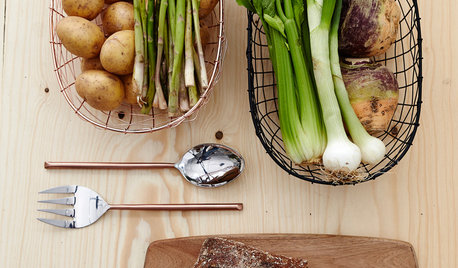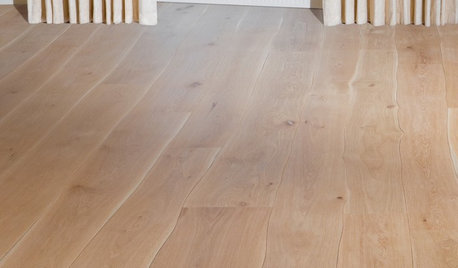First Elberta Peaches
mrsg47
11 years ago
Related Stories

EDIBLE GARDENSHow to Grow Your Own Peaches and Nectarines
Make gardening a little sweeter with these juicy fruits, which you can eat after plucking or preserve for later
Full Story
COLORSpring Forecast: Dare to Love Peach Again
8 Succulent Spaces Show How to Welcome Peach Back Home
Full Story
HOUZZ TOURSHouzz Tour: Georgia Peach Grows California Roots
Southern Glamour and Bay Views Combine in Lush San Francisco Home
Full Story
MOVINGYour First Home: Beautiful Basics and Multitaskers for Every Room
Here’s what to choose and what to avoid when outfitting a new house
Full Story
HOME INNOVATIONSConsidering Renting to Vacationers? Read This First
More people are redesigning their homes for the short-term-rental boom. Here are 3 examples — and what to consider before joining in
Full Story
DECORATING GUIDESThinking Spring: Blossoming Branches
Cherry, Peach and Apple Flowers Make Interiors Bloom
Full Story
REMODELING GUIDES5 Innovative Wood Floors
Natural Forms? Wine Barrels? Peach Pits? Take a Look at Some New Ideas for a Warm Wood Floor
Full Story
COLORFUL HOMESHouzz Tour: Nixing Neutrals to Create a Colorful Craftsman
L.A. homeowners toss beige and white to make way for vibrant blue, purplish gray and cheery peach
Full Story
DECORATING GUIDESDecorating 101: How to Start a Decorating Project
Before you grab that first paint chip, figure out your needs, your decorating style and what to get rid of
Full Story
COLORS OF THE YEARPantone Has Spoken: Rosy and Serene Are In for 2016
For the first time, the company chooses two hues as co-colors of the year
Full StoryMore Discussions







mrsg47Original Author
mrsg47Original Author
Related Professionals
West Milford Landscape Architects & Landscape Designers · Buford Landscape Contractors · Belvedere Park Landscape Contractors · Brandon Landscape Contractors · Cornelius Landscape Contractors · Glendale Heights Landscape Contractors · Huntington Landscape Contractors · Las Vegas Landscape Contractors · Live Oak Landscape Contractors · Los Banos Landscape Contractors · Middletown Landscape Contractors · Oak Forest Landscape Contractors · Spring Landscape Contractors · St. Louis Landscape Contractors · Maplewood Landscape Contractorsmrsg47Original Author
mrsg47Original Author
glenn_russell
mrsg47Original Author
bennylafleur
mrsg47Original Author
fabaceae_native
mrsg47Original Author
Konrad___far_north
mrsg47Original Author
bamboo_rabbit
mrsg47Original Author
bamboo_rabbit
mrsg47Original Author
jbclem
alan haigh
mrsg47Original Author
jbclem
alan haigh
vieja_gw
mrsg47Original Author
alan haigh
vieja_gw
mrsg47Original Author
alan haigh
mrsg47Original Author
alan haigh
jbclem